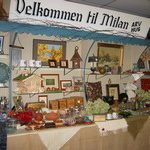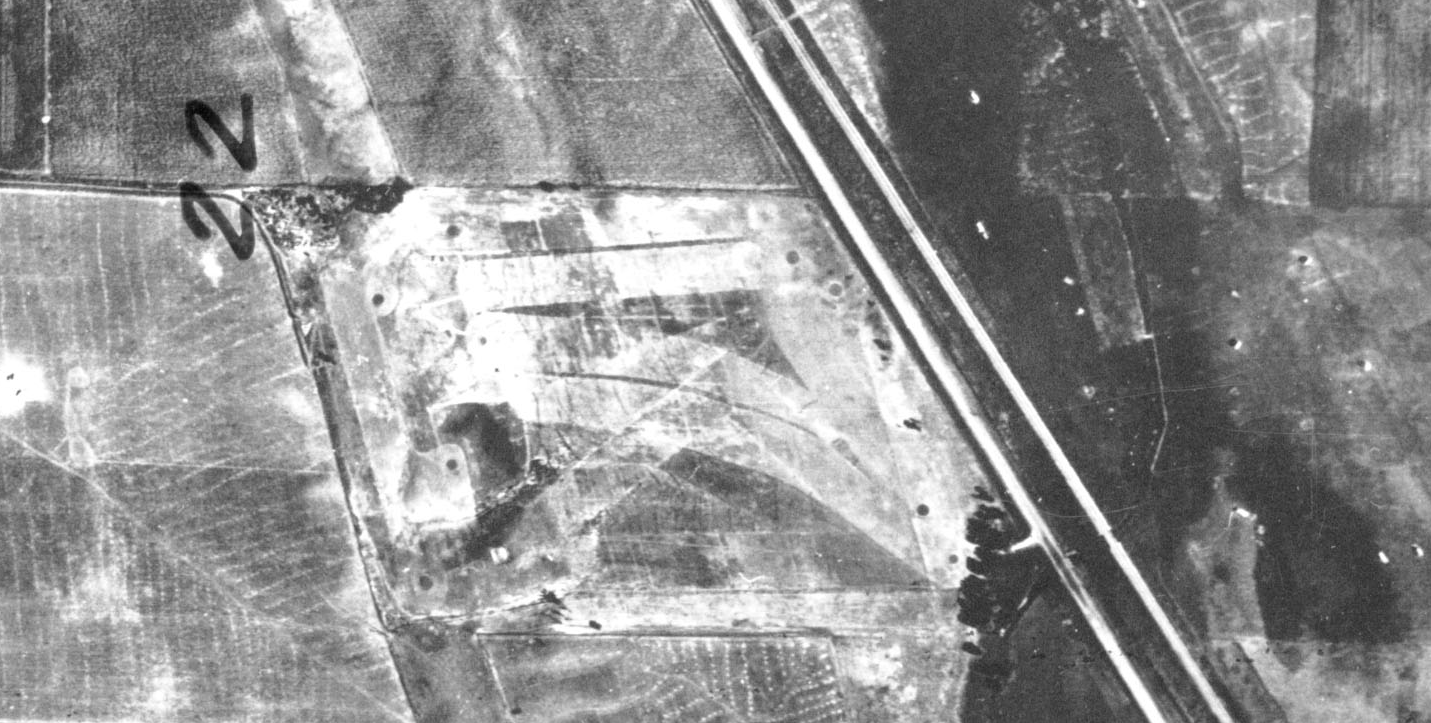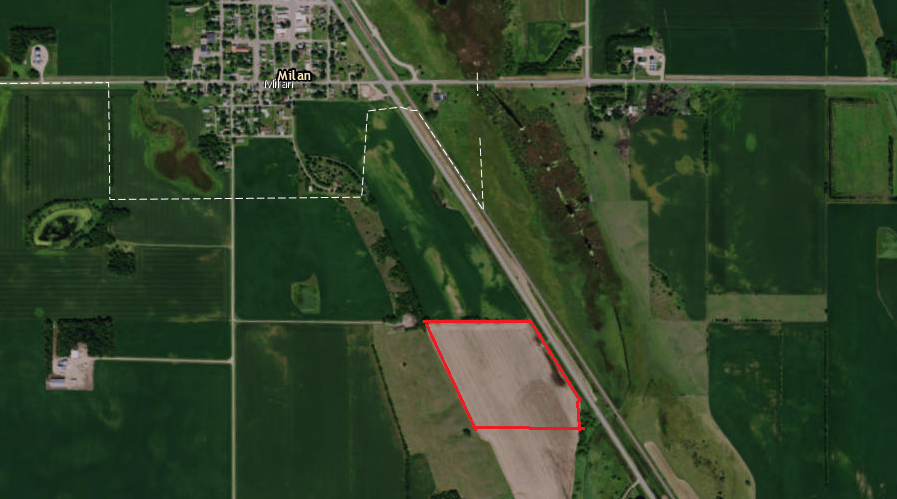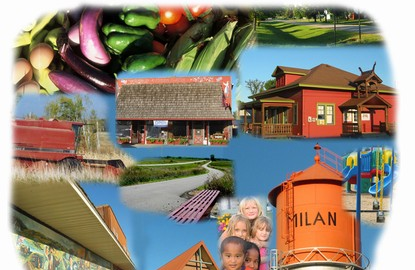This was Milan, Minn., circa 1927: Half a thousand in town, most of them Norwegians. Here a cornfield, there a cornfield, everywhere a … you know the rest. Nine-hole golf course.
This is Milan, Minn., 2017: A third of a thousand residents, most of them Norwegians and Micronesians. Still a ton of cornfields, but with niche farms and soybean fields scattered hither and yon. And …
… no golf course.
Milan — named after the city in Italy but pronounced MY-luhn — has changed a lot in the past 90 years. Then again, it hasn’t.
The Norwegian roots in Milan, a Chippewa County municipality 140 miles east of St. Paul, still run deep, 138 years after the city was founded by Norwegian immigrants in 1879. “Velkommen Til Milan! Norwegian Capital USA,” reads the title heading on the City of Milan’s web site.
(The website mentions nothing about a lost golf course, which of course is one of the town’s attractions. Well, to a party of one, anyway.)
But Milan has diversified in the past 90 years, especially the past 10 or so. Today, Milan might be one of Minnesota’s most eclectic very small towns.
The population is now more than half Micronesian, according to a 2016 Star Tribune profile of Milan. Most of the Micronesians who live in the city have settled there in recent years after taking jobs at the Jennie-O Turkey plant 15 miles away in Montevideo.
The city’s web site also touts the town and area’s “progressive diversity.” Regarding agriculture, the web site mentions “the latest technology for grain farmers, small niche vegetable and fruit farming and everything in between.” (They forgot to mention the cornfields. Chippewa County still produces more corn, by far, than any other crop.) The web site also points to Milan’s “flourishing arts community.”
Part of that arts community, and yet a vital part of “old” Milan, is found on Main Street, where Billy Thompson, a lifelong Milan resident, owns the Arv Hus Museum and Billy Maple Tree’s, a store that plies gifts such as rosemaling (which originated in Norway, no coincidence) and other folk art, plus watercolors, photographs, Norwegian knives, handcrafted pens and much more.

Eclectic? You betcha. And there may be no one in Milan who embodies old and new and eclectic like Billy Thompson.
Thompson, in the Star Tribune story, was paraphrased as saying newcomers and old-time Milan residents get along better thanks to the influx of Micronesians. Which sounds great. But I’m more interested in the old than the new when I dial Billy’s phone number.
Billy, I have been told, knows about the lost golf course in Milan.
Billy answers the phone and tells me the course was established in 1922. It was south of Milan, he says. He remembers a relative playing a round of golf there.
“I had an uncle from Benson. He was a good golfer,” Thompson says. “It was a par 32, and he came in and shot a 28.”
Billy says he still has a cup and ball, somewhere, from the time his father won the 13th flight in a tournament in Milan. If the recollection is entirely accurate, one would presume the golf club either had a sturdy membership to get to 13 or more flights, attracted a lot of out-of-town players to the tournament or invented the now much-maligned concept of a “participation trophy.”
Whatever. Billy has the floor again.
“I would take my dad’s golf club and I would get up in the rough and set it right on top of the rough” and hit the ball, Thompson says.
Another memory: “They had no one to carry the clubs — in those days, we carried them,” Thompson says of the youth in Milan in the 1930s. “So I made big money on that. I carried around the clubs for nine holes, and they gave me 25 cents.”
A 1938 aerial photo confirms that Thompson is spot on about the golf course’s former location. Milan’s course was three-quarters a mile south and slightly east of downtown Milan, on a parallelogram-shaped plot just west of U.S. Highway 59. The first hole went north, Thompson says, and that appears to coincide with a routing of a hole that proceeded north, toward Milan, and bordered the highway.


Billy, a bit randomly but not boastfully, reminds us of his eclectic nature — he mentions he was in the flooring business, filmed movies starting in 1945, and has been in all 50 states as well as Puerto Rico, Japan and Australia, to name a few other locales — and recalls the Milan golf course’s demise.
“It got so bad during the Dust Bowl days,” he says, “the guys left (Milan) and went out west. They had this golf course, and there was a guy by name of Bud Midby, and he took care of this place just before the Second World War. Well, he went off to the war, and that was pretty much the end of this golf course.”
Billy Thompson’s oral, abridged history of Milan’s golf course holds historical water. A handful of old newspaper clips lend support:
— A Minneapolis Tribune story from June 23, 1932, mentioned a “new course” in the Milan area. That appears to be off by a decade as a photo of a Milan Golf Club trophy from either 1923 or 1925 — I can’t fully make out the date — suggests that the course was established in the 1920s, probably 1922, as Thompson said. Note: The trophy, as it turns out, was from Milan, Missouri. My mistake on that. I have deleted a post about the trophy, as well.
— A 1932 Tribune story detailed the election of officers at Milan Golf Club — Stanley Haroldson as president — and the club’s intention to remain membership in the Tri-County league.
— The Milan Standard of May 12, 1939, reported that the season’s first matches were set for the “Big Four league comprising Appleton, Dawson, Madison and Milan.” The same story reported that “the Milan course is in good condition.”
But …
… “When the season started, it was feared that it might be necessary to discontinue the golf course here. And although the prospects are none too bright now, it is believed that the association will live another season.” The story also reported that club secretary-treasurer Olav Opjorden (I bet he was Norwegian) had indicated the club had a nearly break-even season in 1938.
— On June 23, 1939, the Standard reported that Milan had defeated Appleton 27-2 in an inter-club match. Babe Veum was low scorer, with a 73. The Standard from Aug. 16, 1940, reported that 40 players had participated in a shortstop tournament, with Glenn Gilbertson the medalist with a 66.
— But that — again coinciding with Billy Thompson’s recollection — was the last mention of golf in Milan that I could find in a newspaper. Wondering if perhaps the golf club had been revived after World War II, I skimmed through Milan Standard editions of 1944-46 and 1948 and noticed very little coverage of local sports, save for baseball.
Ha det, Milan Golf Club.
Image at top of post is a montage from the City of Milan web site, posted courtesy of City of Milan.
Latest posts by Joe Bissen (see all)
- Another lost routing: Hilltop, Columbia Heights - June 19, 2024
- Two lost routes: First, Antlers Park - June 17, 2024
- Tree trouble and townball: Naeseth Country Club, Wanamingo - May 6, 2024
